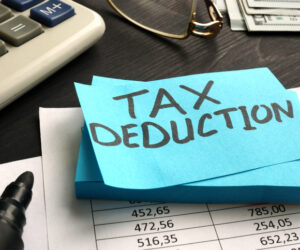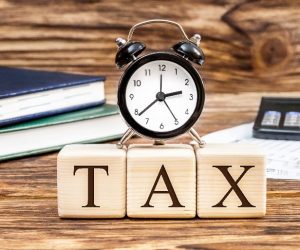In December 2017, President Trump signed the Tax Cuts and Jobs Act into law. Before its inception, trucking tax experts predicted that the tax overhaul would eliminate the per diem allowance for truckers who received a W2 in 2018.

The law removed the allowance for most industries, not just the trucking world. However, it left a special provision in place for business owners, where owner-operators fall, that allows individuals subject to Hours of Service (HOS) regulations to deduct 80 percent of the per diem rate from their taxes. Since the provision is intact, the per diem allowance effectively remains unchanged for owner-operators or self-employed truck drivers who receive a 1099. If you are an actual W-2 employee driver, you cannot take the per diem per sec 1312 of the new tax code. All business expenses associated with employees have been eliminated from Sch 2106 on Sch A of the 1040.
The allowance enables only self-employed or owner-operator drivers to receive a standard amount for each day they are away from home to cover meal expenses. Since per diem is technically a reimbursement, owner-operators can deduct up to 80 percent of per diem pay from their taxable income per sec 1312 of the new tax code.
Per Diem Rates
Since the Tax Cuts and Jobs Act left per diem provisions intact for business owners, self-employed owner-operators, and self-employed truck drivers, rates are the same as last year. Per diem rates for 2018 are $63 per full day within American borders and $68 per full day outside the continental US.
The per diem rate for partial days is 75 percent of a full day’s rate. This equates to $47.25 inside the US and $51 per day for truck drivers who cross international borders.
Who Can Take Per Diem Deductions?
Basically, anyone who is self-employed, contractors, or business owners. And, in the trucking world, only self-employed, owner-operator truck drivers who operate under a 1099 or do not receive a W2 from an employer can take this deduction if they
- Itemize their tax deductions. Employees, as of 1-1-2018, can no longer take this. It has been eliminated in the tax code.
- Are subject to HOS regulations.
- Meet the overnight rule.
- Have a “tax home”: a place of business or actual home to park their rig when off duty.
- Provide proof that they traveled for business on the days they claim a per diem allowance.
Per Diem Overnight Rule
If you are an employee, the law makes it so that all W-2 employees per diem and any other reimbursements must be reimbursed on your paycheck by the employer, and it is non-taxable. So, keeping a record and turning in any receipts to your employer is required, as you will not be able to deduct business-related expenses on your tax returns. It would be advisable to keep a copy of all business expenses for yourself for tolls, motels, repairs, etc., to verify they have been reimbursed.
For owner-operators to claim a per diem tax break, they must meet Internal Revenue Service (IRS) qualifications. One of these requirements is the overnight rule. You must travel far enough away from home that you cannot return in a single day. However, you do not necessarily have to be away from home for a full 24 hours. For instance, a driver on duty for 10 hours cannot complete a 16-hour return trip without a rest stop. This is because HOS regulations only allow up to 14 hours on duty without a full 8 hours in the sleeper berth.
Pros and Cons of Per Diem Pay
Per diem is beneficial for many owner-operator truck drivers. In short, it gives self-employed drivers a tax-free reimbursement for meal expenses. Since it is not taxable income, it may also place the driver in a lower tax bracket, effectively reducing their tax liability.
However, for company drivers, once you factor in the income on the paycheck for company employees, the non-taxed reimbursement will make the paycheck a little higher because the reimbursement is not taxed, and it is added to the existing taxed wages.
Meal Allowances Can Reduce Retirement Savings
Per diem pay can also reduce retirement savings. Companies calculate 401k and other retirement contributions as a percentage of income. Since per diem is technically a reimbursement, not a wage, it does not count as income for these calculations.
Additional Expenses are Not Part of Per Diem Pay
The meal allowance is designed to cover meals and not much else. For instance, it does not cover parking or shower fees, hotel costs, or other incidental expenses. Companies that pay employed drivers per diem may use a lower per-mile rate. They frequently also charge administrative fees for the perk, which do not count as part of the meal allowance. So again, since expenses are not allowed on the Sch A form 2106 for employees, they have to be reimbursed by the company on their paychecks. You still must keep records and receipts.
Tracking Over the Road Per Diem Expenses
It is still a good idea to track per diem and incidental expenses in 2018 since it gives you more options for next year’s tax return. Use these tips to ensure you have everything you need to do your taxes in 2019.
- Back up logs on a regular basis. Many carriers only store electronic data for six months or so. If your return triggers an audit and if you cannot produce the logs, you may be liable for thousands of dollars.
- Use secure cloud storage for your records. Viruses can infect computers, and you can lose or damage mobile devices. Dropbox, Google Drive, and OneDrive are a few of the many secure online storage options.
- Keep receipts for work expenses your employer does not reimburse. This includes maps, wiper fluid, work gloves, tools, uniforms, showers, and more. Jot notes on the receipts indicating the purpose and destination of your trip. Odometer readings are a good idea, too. Keep these if they amend the law and become your employer if you are a W-2 employee. Always keep a personal copy. Once you hand them over to the employer, you never know if they are paid or lost and cannot prove it. Give the employer a copy of the receipts and keep the original so that it cannot be tampered with.
- Organize information logically. Throwing receipts into a catch-all file throughout the year may be more convenient, but it will take longer to sort through later. File information by trip or by month to make it easier to understand later. If you verify reimbursement every week on a checklist, it is much easier to track and resolve any problems.
Although the trucking per diem is still intact, the Tax Cuts and Jobs Act makes significant changes to tax rates, deductions, and credits for 2018. It may be wise to compare last year’s data with the new rate and adjust your withholding if necessary.
Tax Cuts and Job Act Changes Over all Industries are Affected
The Tax Cuts and Jobs Act made several changes to existing deductions, credits, and tax rates. Overall, taxpayers see higher standard deductions and credits and lower income tax rates.
Changes to Standard Deductions
The new law significantly raised most standard deductions. The standard deduction for married joint filers doubled from $12,000 to $24,000. Single filers saw almost an equal increase percentage, jumping to $12,000 instead of the previous $6,300.
Child Tax Credit Increase
Parents can subtract the Child Tax Credit (CTC) directly from their tax bill, not just their taxable income. The new law gave them a break as well, doubling the credit to $2,000 per child. However, the law offsets CTC and standard deduction increases by eliminating the previous $4,050 personal tax exemption.
Tax Bracket Changes
The new legislation also lowered tax rates for most income brackets. Taxes for the lowest bracket remain at 10 percent for both single and married joint filers. The income threshold in this bracket is $9,525 for single taxpayers and $19,050 for married couples.
Taxes for the two most common brackets fell by three percent. This means that single taxpayers who make $9,525 – $38,700 annually and married joint filers making $19,051 – $77,400 will now pay 12 percent income tax. Truck drivers with income in the third tax bracket (single $38,701 – $82,500; married filing jointly $77,401 – $165,000) will pay a 22 percent tax rate in 2018.
Higher earners also saw overall tax cuts for the year, with rates dropping from 28 percent to 24 percent and 33 percent to 32 percent for the fourth and fifth brackets. Taxes for the sixth bracket remain the same at 35 percent, while taxes for the highest bracket (over $500,000 for single filers and $100,000 more for married joint filers) dropped from 39.6 percent to 37 percent.



 For owner-operators, the time is coming to file and pay taxes. The IRS made a statement that all owner-operators have until August...
For owner-operators, the time is coming to file and pay taxes. The IRS made a statement that all owner-operators have until August...

